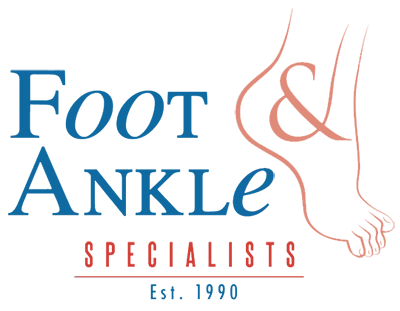-
Foot Swelling
Category: Nails & Skin
Foot swelling, medically known as peripheral edema, is a common condition affecting individuals of all ages. This phenomenon, characterized by an abnormal accumulation of fluid in the tissues of the feet and ankles, can indicate various underlying issues. In this comprehensive exploration, we delve into
Read more -
Foot Therapy
Category: Foot Anatomy
Foot therapy, also known as podiatric physical therapy or physiotherapy for the foot, is a specialized branch of physical therapy that focuses on improving foot health, function, and mobility. This article explores the importance of foot therapy, common conditions treated with foot therapy, therapeutic
Read more -
Football Injuries to the Foot & Ankle
Category: Fitness and Your Feet
Football, a thrilling sport of strategy and physical prowess, places unique demands on the lower extremities. This comprehensive guide aims to unravel the complexities of football-related injuries to the foot and ankle. From common sprains to more intricate issues like fractures and overuse injuries,
Read more -
Freiberg's Disease
Category: Ball/Joint/Tendon
Freiberg's Disease, an uncommon condition affecting the metatarsal bones in the foot, can be a perplexing challenge for those experiencing its symptoms. In this comprehensive guide, we will navigate through the intricacies of Freiberg's Disease, shedding light on its causes, symptoms, diagnostic methods,
Read more -
Frostbite
Category: Nails & Skin
Frostbite, a condition caused by exposure to extreme cold, can have severe consequences when it affects the foot. This comprehensive guide will explore the intricacies of frostbite to the foot, examining the causes, symptoms, preventive measures, and treatment options. Understanding the nuances of this
Read more -
Fungal Nails
Category: Nails & Skin
Fungal nails, medically known as onychomycosis, can be a persistent and bothersome condition affecting the nails. This comprehensive guide will delve into the intricacies of fungal nail infections, exploring their causes, symptoms, available treatments, and preventive measures. Understanding the nuances
Read more -
Gangrene
Category: Nails & Skin
Gangrene is a serious medical condition characterized by the death of body tissue due to a lack of blood supply or a bacterial infection. It is a critical issue that requires immediate medical attention. In this comprehensive guide, we will explore the various aspects of gangrene, shedding light on its
Read more -
Golf Injuries to the Foot & Ankle
Category: Fitness and Your Feet
Golf, a sport often associated with leisure, precision, and skill, requires a harmonious interplay of various body parts, including the feet and ankles. This comprehensive guide will explore the specific foot and ankle injuries that golfers may encounter, dissecting their causes, symptoms, and preventive
Read more -
Gordon Syndrome
Category: Ball/Joint/Tendon
Gordon Syndrome, also known as Distal Arthrogryposis Type 3, is a rare genetic disorder that affects the musculoskeletal system. This article aims to comprehensively understand Gordon Syndrome, exploring its causes, clinical features, diagnosis, and potential treatment options. While rare, this condition
Read more -
Gout
Category: Ball/Joint/Tendon
Gout, often characterized by sudden and intense joint pain, is a form of inflammatory arthritis caused by the accumulation of uric acid crystals in the joints. This condition, while historically associated with indulgence in rich foods and alcohol, can affect anyone and requires careful management. In
Read more -
Haglund's Deformity
Category: Ball/Joint/Tendon
Haglund's Deformity, often referred to as "pump bump," is a condition affecting the heel where a bony enlargement develops at the back of the heel bone. This deformity can lead to pain and discomfort, particularly when wearing shoes. In this comprehensive guide, we will explore the intricacies of Haglund's
Read more -
Hallux Limitus (Stiff Big Toe Joint)
Category: Ball/Joint/Tendon
Hallux Limitus, a condition affecting the metatarsophalangeal (MTP) joint of the big toe, can significantly impact an individual's mobility and overall foot health. This article aims to delve into the intricacies of Hallux Limitus, covering its causes, symptoms, diagnosis, and potential treatment options.
Read more -
Hallux Rigidis (Rigid Big Toe)
Category: Ball/Joint/Tendon
Hallux Rigidis, a condition affecting the metatarsophalangeal (MTP) joint of the big toe, presents unique challenges that can impact an individual's mobility and overall foot health. This article aims to comprehensively explore Hallux Rigidis, covering its causes, symptoms, diagnosis, and potential treatment
Read more -
Hallux Varus (Bunion)
Category: Ball/Joint/Tendon
Hallux Varus is a distinctive condition affecting the alignment of the big toe, characterized by an inward deviation of the toe. This article delves into the intricacies of Hallux Varus, exploring its causes, symptoms, diagnosis, and potential treatment strategies to understand this toe deformity comprehensively. What
Read more -
Hammertoe Surgery
Category: Ball/Joint/Tendon
Hammertoe, a joint foot deformity, can significantly impact one's quality of life, causing discomfort and hindering daily activities. This article delves into Hammertoe surgery, exploring its intricacies, indications, procedures, and what individuals can expect during recovery. Causes and Symptoms Before
Read more -
Hammertoes
Category: Ball/Joint/Tendon
Hammertoes, a common foot deformity, can cause discomfort and affect the quality of life for those affected. In this comprehensive guide, we will explore the intricacies of hammertoes, shedding light on their causes, symptoms, diagnostic methods, and various treatment options. By providing a deeper understanding
Read more
Contact Us
Send Us an Email
Our Location
Find us on the map
Hours of Operation
Our Regular Schedule
New Albany
Monday:
Closed
Tuesday:
9:00 am-5:00 pm
Wednesday:
9:00 am-5:00 pm
Thursday:
9:00 am-5:00 pm
Friday:
Closed
Saturday:
Closed
Sunday:
Closed
Louisville
Monday:
8:30 AM-5:00 PM
Tuesday:
8:30 AM-5:00 PM
Wednesday:
8:30 AM-5:00 PM
Thursday:
8:30 AM-5:00 PM
Friday:
8:00 AM-12:00 PM
Saturday:
Closed
Sunday:
Closed
